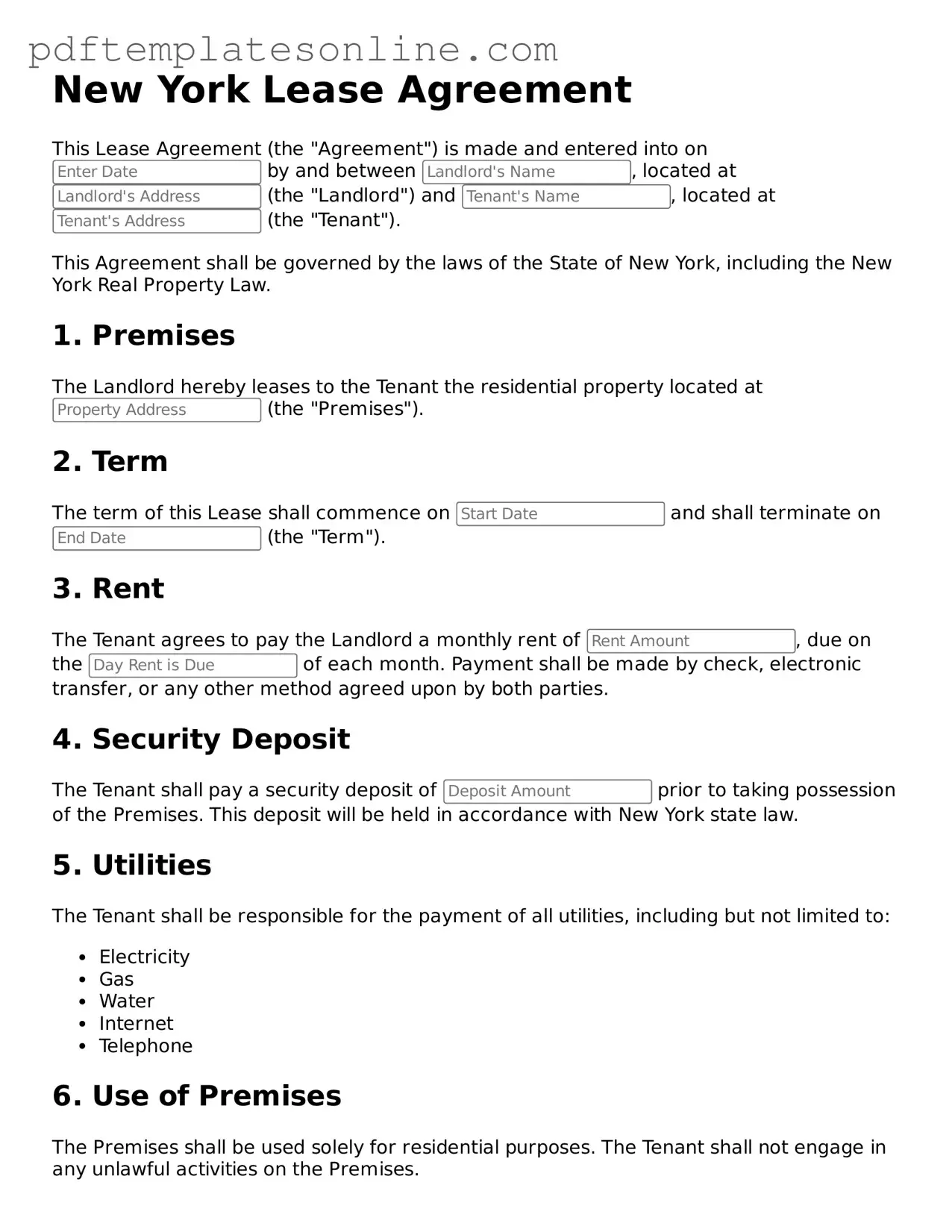Filling out a New York Lease Agreement can be a straightforward process, but many people make common mistakes that can lead to confusion or legal issues down the line. One frequent error is failing to include all necessary parties. When signing a lease, it’s important to list everyone who will be living in the unit. Omitting a roommate or partner can create complications in the future, especially if issues arise regarding rent or responsibilities.
Another common mistake is neglecting to specify the rental amount clearly. The lease should state the exact monthly rent and any additional fees. If this information is vague or missing, it can lead to misunderstandings about what is owed each month. Clarity is key to preventing disputes later on.
People often overlook the importance of the lease term. Whether it’s a month-to-month agreement or a fixed-term lease, the duration should be clearly defined. If the lease term is not specified, it may lead to confusion about when the lease begins and ends, which can affect both parties' planning.
Additionally, many individuals fail to read the fine print. Each lease may contain specific clauses about maintenance responsibilities, pet policies, or subletting rules. Ignoring these details can result in unexpected obligations or restrictions. It's always wise to thoroughly review the entire document before signing.
Another mistake is not documenting the condition of the property before moving in. Taking photos or noting any existing damages can protect tenants from being held responsible for those issues later. If a tenant skips this step, they may find themselves in a difficult situation when it comes time to get their security deposit back.
Some people also forget to include a security deposit clause. This clause should specify the amount of the deposit and the conditions under which it can be withheld. Without this information, tenants might be unsure of their rights regarding the return of their deposit.
Lastly, failing to understand the local laws can lead to significant issues. New York has specific regulations regarding rental agreements, and being unaware of these can put both tenants and landlords at risk. It’s essential to familiarize oneself with the relevant laws to ensure compliance and protect everyone involved.
